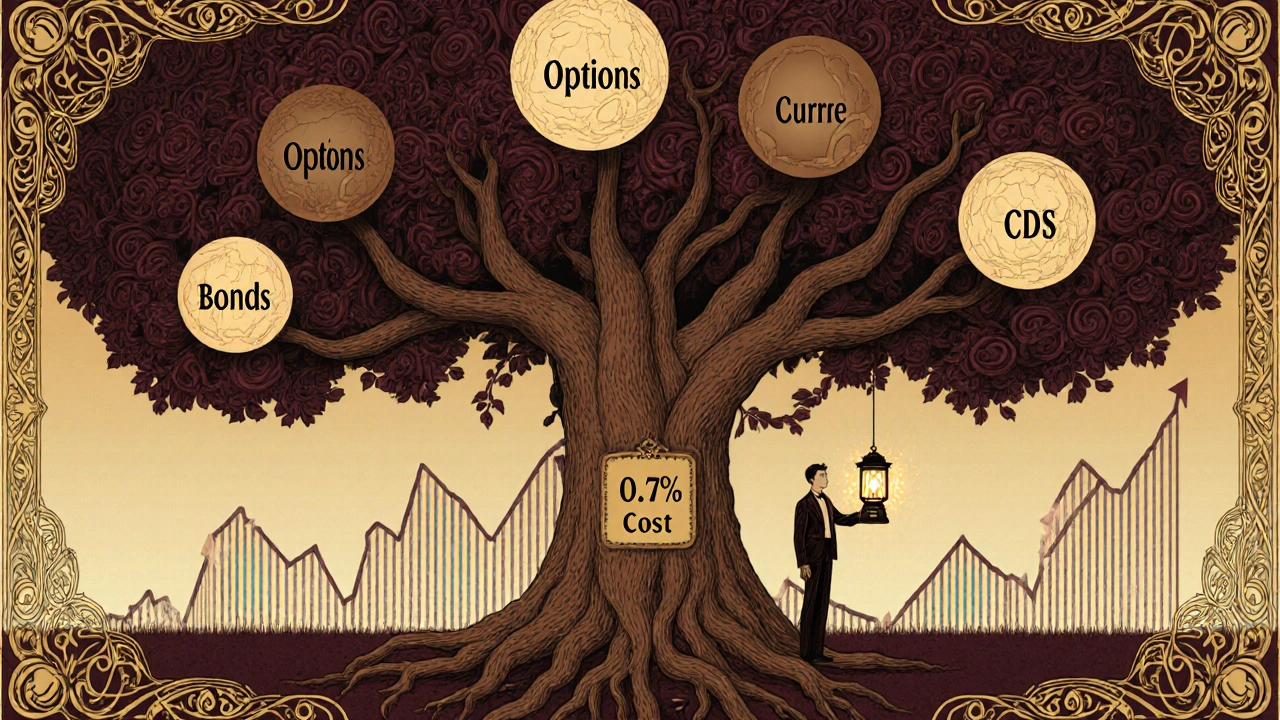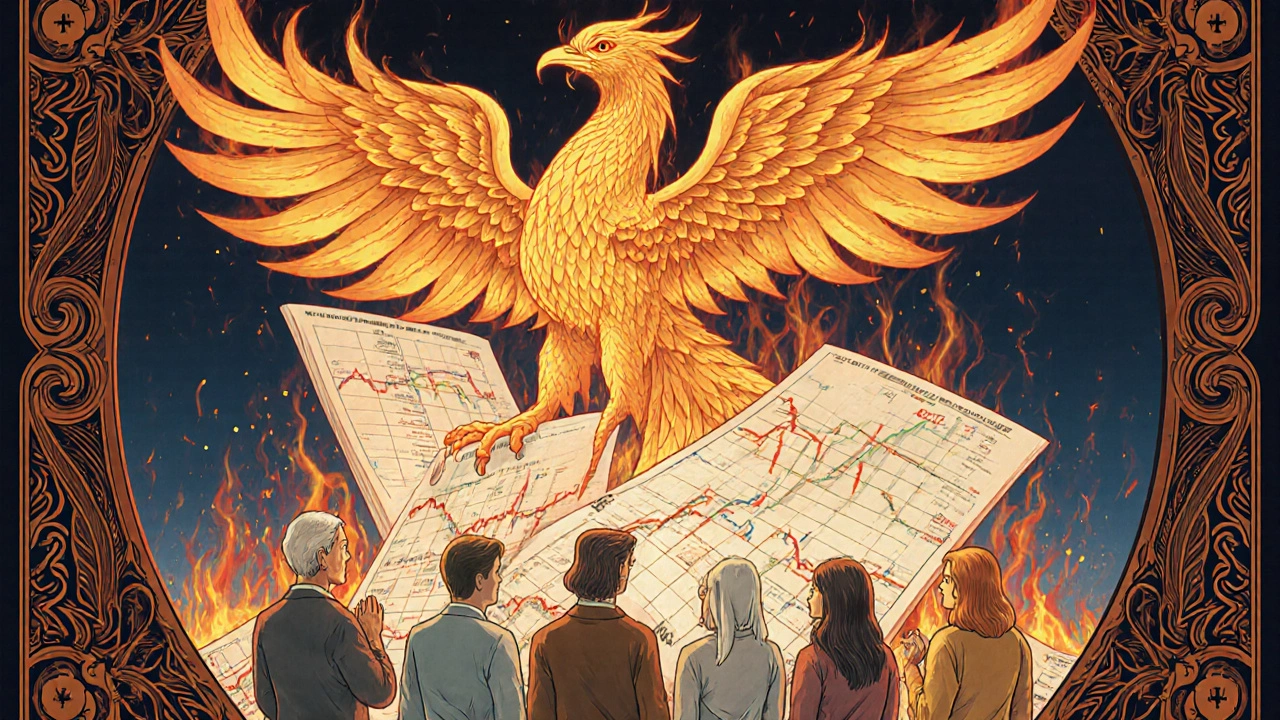Tail Risk Hedging Cost/Benefit Calculator
See how tail risk hedging protects against extreme market crashes. Input your portfolio details to compare hedged vs unhedged scenarios during a 30% crash.
Calculate Your Protection
What Is Tail Risk Hedging?
Most investors think of risk as something that happens occasionally-a 5% drop, a 10% correction. But tail risk hedging prepares you for the kind of events that happen once in a decade, or even less. These are the crashes that wipe out 30%, 40%, or more of your portfolio in weeks: the 2008 financial crisis, the 2020 pandemic plunge, or the 2022 bond-stock selloff. Tail risk isn’t about normal market swings. It’s about the far left edge of the probability curve-the "tails"-where traditional models say something shouldn’t happen, but it does anyway.
Think of it like home insurance. You don’t expect your house to burn down, but if it does, you’re glad you paid for coverage. Tail risk hedging works the same way. You pay a small, predictable cost every year to protect against a catastrophic loss you can’t predict but know is possible. The math behind it goes back to Benoît Mandelbrot in the 1960s, who showed that financial markets don’t follow neat bell curves. They’re messy. Extreme events happen far more often than models assume.
How Does It Actually Work?
The most common way to hedge tail risk is by buying out-of-the-money put options on the S&P 500. These are contracts that give you the right to sell stocks at a set price, even if the market crashes. If the market drops 20%, those puts skyrocket in value. You don’t need to own the options forever-you just need them in place when the crash hits.
But it’s not just about stock puts. Sophisticated portfolios use a mix of instruments: options on bonds, currencies, commodities, and even credit default swaps. Why? Because crashes don’t always look the same. In 2008, it was credit markets collapsing. In 2020, it was liquidity freezing. In 2022, it was inflation killing both stocks and bonds at the same time. A good tail hedge doesn’t rely on one asset. It’s built to work across multiple types of disasters.
These strategies are called "long volatility" because they profit when markets get scared. Most portfolios are "short volatility"-they do well when things are calm. Tail hedges are the opposite. They lose money slowly during quiet times, but make big gains when chaos hits. That’s the asymmetry: limited loss, unlimited upside.
What Does It Cost?
You can’t get free protection. The annual cost of tail risk hedging typically runs between 0.5% and 1.5% of your portfolio. For a $1 million portfolio, that’s $5,000 to $15,000 a year. It feels expensive-especially when the market keeps going up.
Here’s the catch: during calm markets, this cost is real. From 2012 to 2019, markets barely dropped. Many investors who kept tail hedges in place saw their returns dragged down by 1.2% to 1.8% per year compared to those who didn’t. That’s why so many portfolios abandon their hedges after a few years of calm. But then, when the crash comes, they’re exposed.
Some institutions now use smarter methods to cut costs. Instead of holding hedges all the time, they only activate them when market signals show rising danger-like when volatility skew turns sharply negative or when correlation between assets starts breaking down. This "tactical" approach reduces the annual cost to around 0.3%-0.6%, but it requires constant monitoring and discipline.

Who Benefits the Most?
Not everyone needs tail risk hedging. If you’re a day trader or a short-term hedge fund, you’re already managing volatility every day. You don’t need this kind of insurance.
But if you’re managing money with a long time horizon-like a pension fund, endowment, or family office-you absolutely do. The California Public Employees’ Retirement System (CalPERS) found their 0.75% tail hedge reduced their 2022 losses by 28%. Harvard’s endowment used theirs during COVID to avoid selling assets at the bottom. Yale’s team switched to tactical hedging after realizing they were paying for protection they didn’t need for years.
Endowments and pensions have a unique problem: they must pay out money every year, no matter what. If their portfolio drops 30%, they’re forced to cut spending, lay off staff, or freeze projects. Tail risk hedging gives them breathing room. It turns panic into planning.
How Is It Different From Other Strategies?
Traditional diversification-holding stocks, bonds, real estate-doesn’t protect you during a systemic crash. In 2008 and 2022, stocks and bonds fell together. Correlation went to 1.0. Diversification failed.
Value at Risk (VaR) models, used by most banks and funds, assume markets behave normally. They told investors in 2008 that a 20% drop was a 1-in-10,000-year event. It happened. VaR models were wrong by 99.7%.
Portfolio insurance, used in the 1987 crash, made things worse. It forced sellers to dump more shares as prices fell, accelerating the crash. Tail risk hedging doesn’t do that. It’s passive. You pay for the option. You don’t trade it until the crash hits. That’s why it’s called "convex"-it protects you without adding to the problem.
But it’s not perfect. Risk parity strategies, which balance assets by volatility, did better than tail hedges during the 2010s bull market. Tail hedges underperformed by over 1% per year. That’s why many investors now combine them: use risk parity for steady growth, and tail hedges for black swans.

Why Do So Many Fail?
According to Meketa Investment Group, 68% of institutional tail risk programs fail-not because the strategy is flawed, but because of poor execution.
Common mistakes:
- Putting in too little-under 0.5% of the portfolio. That’s like buying fire insurance for $20 a year on a $1 million home.
- Putting in too much-over 2%. That kills returns in calm markets.
- Not having rules. If you don’t decide in advance when to adjust the hedge, you’ll panic and sell when it’s expensive-or ignore it until it’s too late.
- Ignoring costs. Many programs don’t track the true cost of premiums, slippage, or rebalancing.
- Expecting it to make money. It’s insurance. It’s supposed to lose money most years.
The best programs treat tail risk hedging like a system, not a tactic. They assign a dedicated team, use real-time dashboards, and review performance quarterly-not just after a crash.
What’s Changing in 2025?
The market for tail risk hedging has exploded. In 2010, there were $5 billion in assets. By mid-2025, that number hit $47 billion. The biggest players are Universa Investments, AQR, and Bridgewater. Goldman Sachs even launched a public ETF (GTLT) for smaller investors.
New tools are making it smarter. Machine learning now helps identify when a crisis is brewing-using data from options pricing, bond spreads, and currency flows. Goldman’s 2024 toolkit reduced false alarms by 37%. Some funds are now harvesting volatility across asset classes, cutting costs by nearly half.
But there’s a warning. AQR’s Cliff Asness says if everyone starts using tail hedges, the options markets will get too expensive. The cheap mispricings that make these strategies work could disappear. By 2035, crisis alpha could drop by 40-60%.
The International Monetary Fund’s 2024 report says it best: tail risk hedging isn’t a one-time fix. It’s a living system. You have to adapt as markets change.
Should You Use It?
If you’re a retail investor with a 401(k) or IRA, you probably don’t need to build your own tail hedge. But you can still benefit.
Look for mutual funds or ETFs that offer tail risk protection. Some target retirees or conservative portfolios. Check their prospectus for mentions of options, volatility exposure, or crisis alpha.
If you manage a larger portfolio-say, over $500,000-and you can’t afford to lose big during a crash, then yes. Tail risk hedging isn’t optional. It’s the difference between surviving a crisis and being forced to sell everything at the bottom.
Start small. Allocate 0.5%-1% of your portfolio. Use simple instruments like S&P 500 puts. Monitor costs. Don’t panic if it loses money for a year. Wait for the crash. And when it comes, you’ll be glad you did.

Graeme C
Let’s be real-this isn’t insurance, it’s a tax on patience. I’ve watched people pay 1.2% annually for 7 years straight while the S&P doubled. Then when 2022 hit, their puts paid off… barely. Meanwhile, I just held cash and bought the dip at -35%. The cost of ‘protection’ is the opportunity cost of not compounding. If you’re not actively managing your hedge, you’re just giving money to market makers.
And don’t get me started on those ETFs like GTLT. They’re structured to bleed you dry with rollover costs and liquidity premiums. Real tail hedging requires options literacy. If you don’t understand vega, skew, and term structure, don’t touch it.